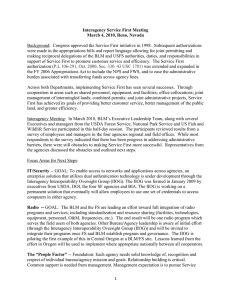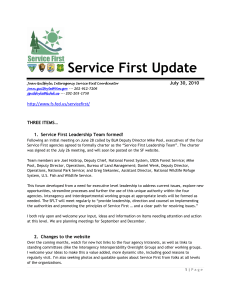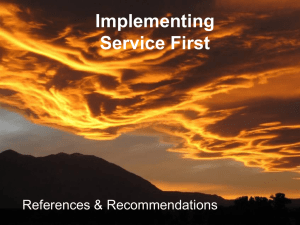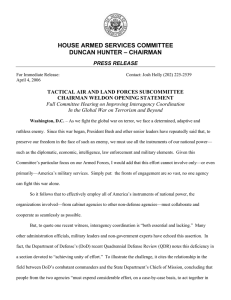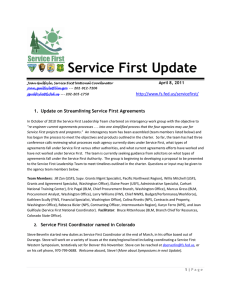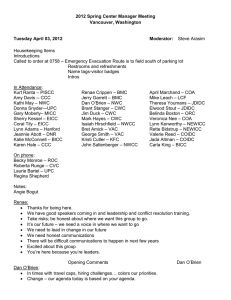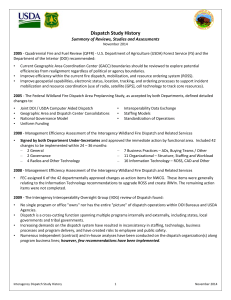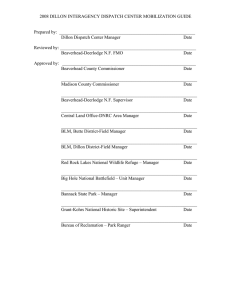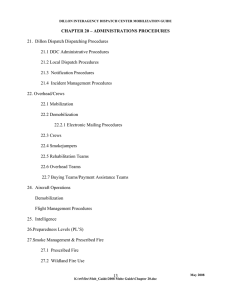FIRE: The First Service First SERVICE FIRST ONLINE WORKSHOP
advertisement
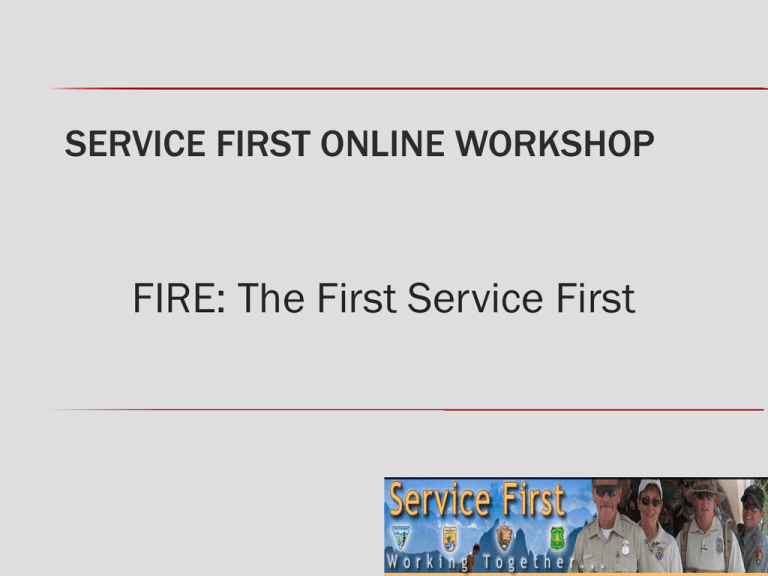
SERVICE FIRST ONLINE WORKSHOP FIRE: The First Service First RESPONSE/RESOURCE COORDINATION SYSTEM National Interagency Coordination Center/Geographic Coordination Centers @ Incident response, movement, coordination Initial Attack Response @ Western US divided into interagency dispatch centers. @ Generally response by nearest resource regardless of agency @ ICT composed of multi-agency / Multi-jurisdictions FIRE MANAGEMENT AND ADMINISTRATION Examples of unit interagency fire organizations Pacific Northwest *One integrated fire organization between BLM and USFS. * Unit fire managers responsible for both BLM and USFS resources and personnel. Southern *Prescribed Fire Training Center Tallahassee (NPS, FWS, FS, Nature Conservancy) FIRE MANAGEMENT AND ADMINISTRATION Rocky Mountain * Formal service first fire organization @ San Luis Valley (FWS, NPS, FS, BLM) Organization chart attached (FS, FWS, BLM provide positions, NPS provides funds for fire management) Southwest – * Integrated dispatch centers. * Shared fire leadership @ North Kaibab RD/Grand Canyon NP @ Catalina RD/Saguaro NP SOUTHWEST IDOPP The Interagency Dispatch Optimization Pilot Project (IDOPP) • • • Currently underway in California and the Southwest Geographic Areas. Will make recommendations to consolidate future dispatch center functions. The goal: providing the most cost-effective and efficient interagency dispatch operations in both California and the Southwest. First Phase Proposal for the Southwest • • • Reduces twelve dispatch centers to eight (four in each state). Initial restructuring will take place in FY 12. Long term objective: two dispatch centers per state, within the next decade. SOME ADMINISTRATIVE CHALLENGES Existing Administrative Barriers • • • • Trading of overhead assessments. Exchange of funds between agencies. Rulebook / Handbook differences between agencies. Supervision of personnel. • • • • Performance issues with an employee. Difficult for the manager, especially if from a different agency, to handle effectively or legally. Coordination with supervisor of record is essential. Agreement by line officers on classification and grading of employees within an interagency organization. PRAGMATIC PRINCIPLES 1. 2. 3. 4. 5. 6. Needs to be a clear mutual interest…it needs to make sense Agreements need to be formalized in writing Needs to have formal oversight group to monitor and adapt Challenges need to be recognized, discussed and honestly addressed…pretending they don’t exist leads to failure All involved need to realize there is no free lunch Leadership closest to the effort must be committed…organizational culture will fight effort

